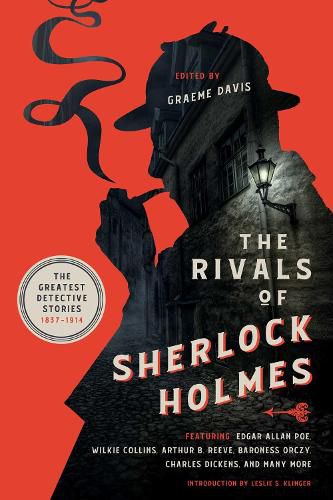Readings Newsletter
Become a Readings Member to make your shopping experience even easier.
Sign in or sign up for free!
You’re not far away from qualifying for FREE standard shipping within Australia
You’ve qualified for FREE standard shipping within Australia
The cart is loading…






This masterful collection of seventeen classic mystery stories, dating from 1837 to 1914, traces the earliest history of popular detective fiction.
Today, the figure of Sherlock Holmes towers over detective fiction like a colossus-but it was not always so. Edgar Allan Poe’s Dupin, the hero of The Murders in the Rue Morgue, anticipated Holmes’ deductive reasoning by more than forty years. In A Study in Scarlet, the first of Holmes’ adventures, Doyle acknowledged his debt to Poe-and to Emile Gaboriau, whose thief-turned-detective Monsieur Lecoq debuted in France twenty years earlier.
If Rue Morgue was the first true detective story in English, the title of the first full-length detective novel is more hotly contested. Among the possibilities are two books by Wilkie Collins-The Woman in White (1859) and The Moonstone (1868)-Mary Elizabeth Braddon’s The Trail of the Serpent (1861) or Aurora Floyd (1862), and The Notting Hill Mystery (1862-3) by the pseudonymous Charles Felix.
As the early years of detective fiction gave way to two separate golden ages-hard-boiled tales in America and intricately-plotted cozy murders in Britain-and these new sub-genres went their own ways, their detectives still required the intelligence and clear-sightedness that characterized the earliest works of detective fiction: the trademarks of Sherlock Holmes, and of all the detectives featured in these pages.
$9.00 standard shipping within Australia
FREE standard shipping within Australia for orders over $100.00
Express & International shipping calculated at checkout
This masterful collection of seventeen classic mystery stories, dating from 1837 to 1914, traces the earliest history of popular detective fiction.
Today, the figure of Sherlock Holmes towers over detective fiction like a colossus-but it was not always so. Edgar Allan Poe’s Dupin, the hero of The Murders in the Rue Morgue, anticipated Holmes’ deductive reasoning by more than forty years. In A Study in Scarlet, the first of Holmes’ adventures, Doyle acknowledged his debt to Poe-and to Emile Gaboriau, whose thief-turned-detective Monsieur Lecoq debuted in France twenty years earlier.
If Rue Morgue was the first true detective story in English, the title of the first full-length detective novel is more hotly contested. Among the possibilities are two books by Wilkie Collins-The Woman in White (1859) and The Moonstone (1868)-Mary Elizabeth Braddon’s The Trail of the Serpent (1861) or Aurora Floyd (1862), and The Notting Hill Mystery (1862-3) by the pseudonymous Charles Felix.
As the early years of detective fiction gave way to two separate golden ages-hard-boiled tales in America and intricately-plotted cozy murders in Britain-and these new sub-genres went their own ways, their detectives still required the intelligence and clear-sightedness that characterized the earliest works of detective fiction: the trademarks of Sherlock Holmes, and of all the detectives featured in these pages.